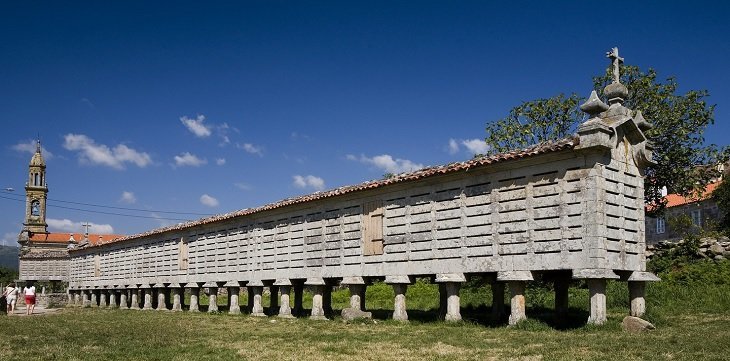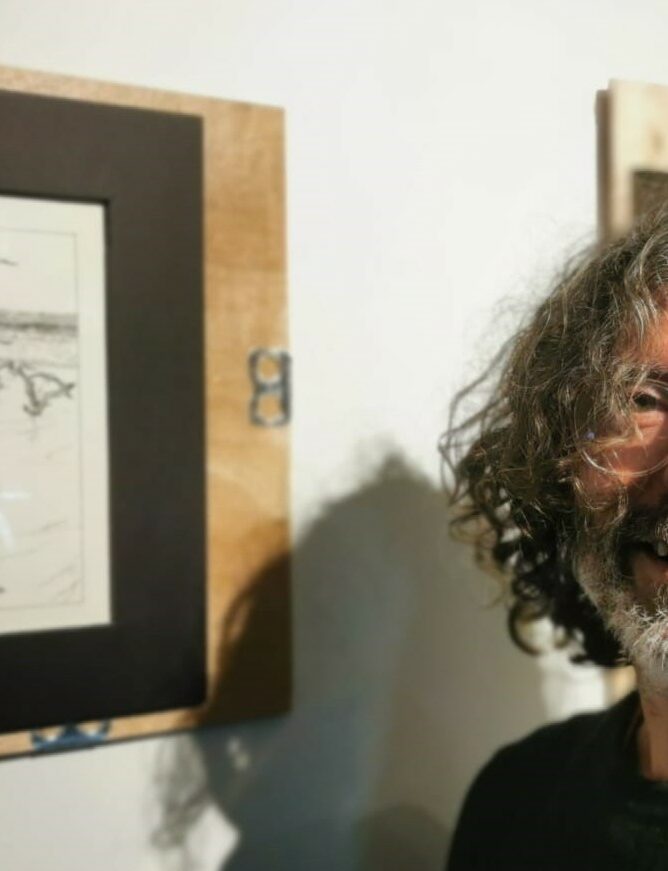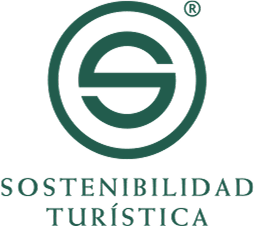Just 8 minutes from our spa hotel stands one of Galicia’s most iconic landmarks: the Carnota Granary (Hórreo de Carnota). A National Monument since 1973, this 18th-century structure is a masterpiece of rural architecture and a testament to Galicia’s agricultural heritage.
What Is a Granary (Hórreo)?
Granaries (hórreos) are traditional raised storage buildings designed to protect crops (corn, potatoes, onions) from rodents, humidity, and insects. While many are now decorative, they were once vital to Galician farm life.

Pero antes de hablarte del hórreo de Carnota vamos a darte alguna información básica sobre qué es un hórreo, las partes que lo componen y los diferentes tipos de hórreos que existen en Galicia.
Key Features of a Granary:
- Raised on pillars (pés or cepas) to deter pests.
- Ventilation gaps between slats (tornarratos) to keep grain dry.
- Stone or wood construction, depending on regional style.

The Carnota Granary: A National Treasure
History & Construction
- Built in 1768 by architect Gregorio Quintela (who also designed the nearby Lira Granary).
- Expanded in 1783 to reach 34.7 meters long—making it Galicia’s longest granary.
- Style: Noia-type, characterized by fully stone construction, Baroque pinnacles, and a cross-topped finial.
Purpose
Originally owned by the Church of Carnota, it stored the “diezmo” (tithe)—a 10% tax on harvests paid to the clergy.
Curiosities & Regional Context
Why Are There Different Granary Styles?
Galicia has 30+ granary types, shaped by:
- Local materials (stone in coastal areas, wood inland).
- Builder traditions: Noia-style (precise stonework) vs. Fisterra-style (rougher stone).
What Do Galicians Call Granaries?
Over 39 local names exist, including:
- Cabazo (most common).
- Espigueiro (inland areas).
- Paneira (southern Galicia).
Carnota’s Granary Legacy
The municipality has 900+ inventoried granaries, but the Carnota Granary stands out for its:
- Sheer size (22 pairs of pillars).
- Baroque details (cross finial, pinnacles).
- Historical role in the church’s tithe system.
How to Visit the Carnota Granary
Location & Access
📍 GPS Coordinates: 42°49’21.5″N 9°05’25.9″W
🚗 By Car (Recommended):
- From A Coruña (1h20m): Take AG-55 (toll highway) → AC-552 → Follow signs to Carnota.
- From Santiago (1h): AG-56 → AC-550 → DP-6202.
- From Our Hotel (8min): A scenic 7km drive via AC-550.
🚌 By Bus: Limited service; check MonBus routes to Carnota.
Nearby Attractions
- Carnota Beach (500m away): Galicia’s longest sandy stretch.
- Mount Pindo (15min drive): The “Celtic Olympus.”
Final Tips for Your Visit
- Photography: Sunset casts golden light on the granite.
- Combine with: A beach walk or hike up Mount Pindo.
- Respect: Do not climb on the structure (it’s a protected monument).
After exploring, recharge at our spa hotel—just minutes away!







